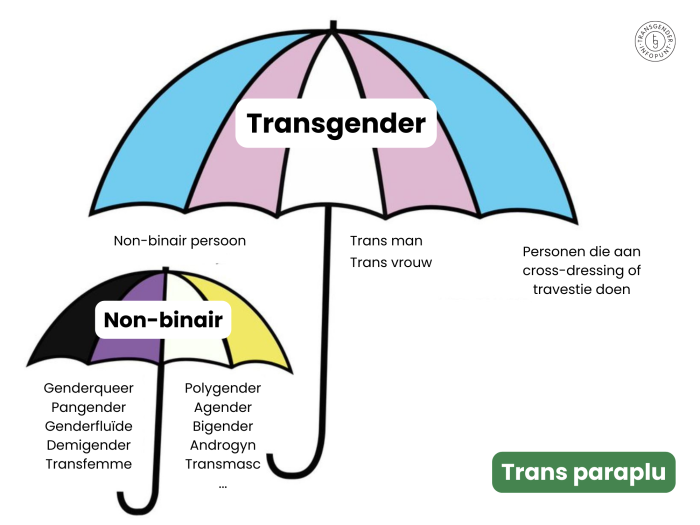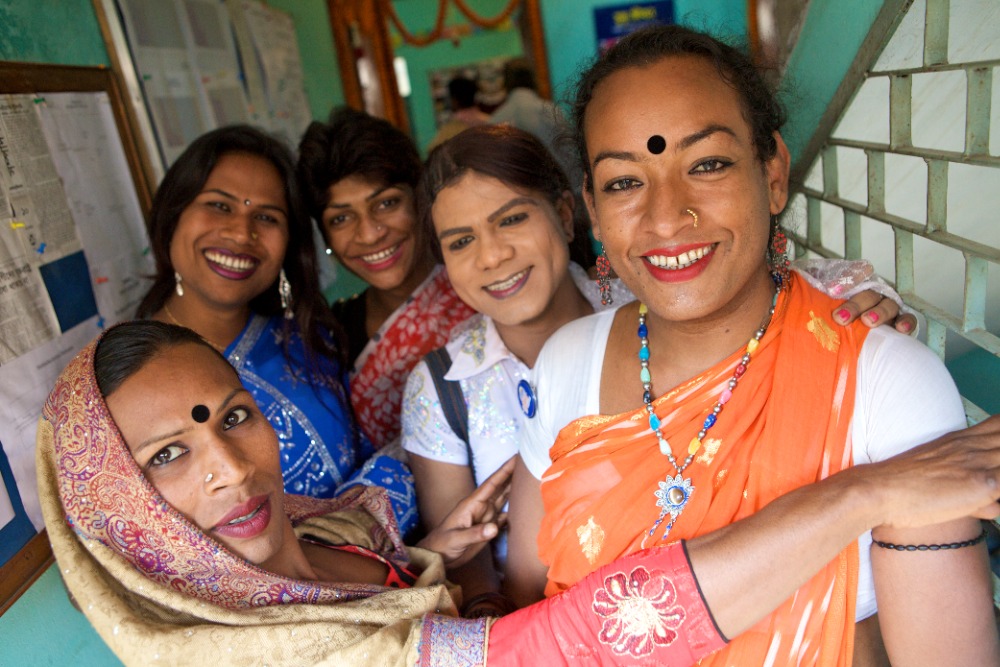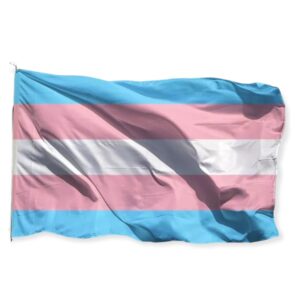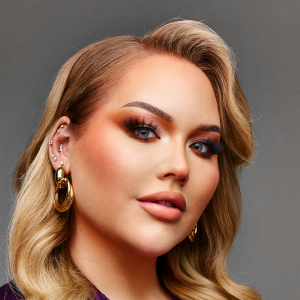What does transgender mean?
What is transgender?
Transgender is a term used to describe people whose gender identity does not align with the sex they were assigned at birth. This means that someone who was assigned male at birth may identify as female, and vice versa, or they may identify outside of the traditional binary concept of gender (such as non-binary).
Transgender as an umbrella term
Transgender is an umbrella term that refers to people whose gender identity differs from the sex they were assigned at birth. It encompasses a wide range of gender identities and expressions. These include:
- Transgender men: Individuals who were assigned female at birth but identify and live as men.
- Transgender women: Individuals who were assigned male at birth but identify and live as women.
- Non-binary individuals: People who do not exclusively identify as male or female, but fall somewhere in between or outside these categories. Non-binary can include terms like genderqueer, genderfluid, agender, and bigender. We delve deeper into this in our blog: “What is Non-Binary?”
Is crossdressing the same as being transgender?
Crossdressing does not necessarily fall under the transgender umbrella, as it involves a different experience and practice of gender expression. Crossdressing refers to wearing clothing traditionally associated with a different gender, often for personal, expressive, or sometimes performative reasons. Crossdressers typically do not identify as a gender different from their birth sex; it primarily involves gender expression rather than gender identity.
Transgender, on the other hand, refers to individuals whose gender identity differs from the sex they were assigned at birth. For transgender people, it is about a deep and lasting identification with a different gender than the one assigned at birth. Crossdressing can be part of gender expression, but it does not mean that a crossdresser also identifies as transgender. In short, while crossdressing relates to gender expression, it does not automatically fall under transgender, as transgender is about one’s gender identity.
Transgender versus Cisgender
Transgender individuals may choose to express their gender identity through clothing, behavior, or by undergoing a medical transition. This can include hormonal treatments and surgical procedures. However, not all transgender people opt for medical transitions; their identity is not dependent on physical changes but on their internal sense of self.
The term transgender is distinct from cisgender, which refers to people whose gender identity aligns with the sex assigned to them at birth. For example, if someone is assigned female at birth and also identifies as female, that person is cisgender. The same applies to men who identify as male.
Cisgender is the opposite of transgender, where someone identifies with a gender different from their birth sex. The term cisgender highlights that, just as transgender people have a specific experience with gender identity, people whose gender identity aligns with their birth sex also have a specific gender experience. The word “cis” comes from Latin and means “on the same side,” while “trans” means “on the other side.”
It’s also important to note that gender identity is different from sexual orientation: gender is about who you are, while sexual orientation is about who you are attracted to.
History of transgender people
The history of transgender people is complex and ancient, though modern terminology and understanding have only recently gained more visibility. In many ancient cultures, examples of gender diversity already existed. For example:
- In ancient India and South Asia, there was the Hijra community, often recognized as a “third gender.” They fulfilled religious and cultural roles that fell outside the binary concepts of male and female.
- Two-Spirit people in many Native American cultures also played special spiritual and social roles. They were seen as individuals who combined both male and female traits.
The modern transgender movement began to take shape in the 20th century. In the 1950s and 1960s, the first gender-affirming surgeries were performed, providing transgender individuals with new opportunities to physically align their bodies with their gender identities. A well-known example is Christine Jorgensen, one of the first Americans to undergo gender confirmation surgery in 1952, who became an important public figure.
The term “transgender” came into common use in the 1960s, although the concept existed much earlier. In the decades that followed, the movement evolved, with the formation of advocacy organizations and increased attention to the rights of transgender individuals, particularly in the 1990s and beyond.
In the late 20th and early 21st centuries, countries began to legally recognize transgender rights, such as the right to amend official documents to reflect a person’s gender identity. Activists like Marsha P. Johnson and Sylvia Rivera, who both played key roles in the Stonewall riots, helped bring visibility to the transgender community in the fight for equal rights.
Transgender Men
Transgender men are individuals who were assigned female at birth but identify and live as men. Their experiences are unique and can vary depending on factors like culture, environment, and access to medical care. Many transgender men choose to undergo a medical transition to align their bodies with their gender identity. This process may include:
- Hormone therapy (testosterone): Testosterone helps transgender men develop male secondary sexual characteristics, such as a deeper voice, facial hair, and increased muscle mass. Research has shown that long-term hormone therapy is generally safe and has many positive effects on the well-being of transgender men.
- Surgical procedures: Some transgender men undergo surgeries such as chest masculinization (mastectomy) or gender-affirming surgeries. Studies have shown that these surgeries often lead to improved mental health and reduced gender dysphoria.
Research indicates that transgender men often experience gender dysphoria, a sense of discomfort when their biological body does not align with their gender identity. Gender dysphoria can be accompanied by higher levels of depression, anxiety, and stress. However, studies show that after a successful transition, whether social or medical, the mental health of transgender men often improves significantly. Want to read personal stories from a trans man? Check out our blog: “A Good Conversation with: Kai!”
Transgender Women
Transgender women are individuals who were assigned male at birth but identify and live as women. Their experiences, as well as the social and medical challenges they face, are a significant focus of scientific research.
Many transgender women choose to undergo a medical transition to bring their bodies more in line with their gender identity. This transition may include:
- Hormone therapy (estrogen and anti-androgens): Estrogen helps transgender women develop female secondary sexual characteristics, such as breast growth, redistribution of body fat, and softer skin. Anti-androgens are often used to suppress the effects of testosterone. Research shows that hormone therapy often leads to improved psychological well-being and reduced gender dysphoria.
- Surgical procedures: Some transgender women undergo surgeries such as breast augmentation or vaginoplasty. These procedures can contribute to a significant improvement in quality of life and self-image. Scientific studies indicate that transgender women who have access to these surgeries often experience lower rates of depression and anxiety.
Kai: Read his story in the blog ‘A Good Conversation with Kai!’
Rikkie Kolle becomes the first trans woman to win the title of Miss Netherlands. The 22-year-old Rikkie Kolle has been crowned Miss Netherlands 2023, making her the first transgender woman to achieve this title. Source: NOS News 2023.
Transgender Flag
The transgender flag was designed in 1999 by Monica Helms, an American transgender activist and veteran. The flag consists of five horizontal stripes: two light blue, two pink, and a white stripe in the middle. Each color has a specific meaning:
- Light blue: Represents the traditional color associated with boys.
- Pink: Represents the traditional color associated with girls.
- White: Symbolizes people who identify as non-binary, gender-fluid, or those in transition.
Helms designed the flag with the idea that no matter how you hang it, it is always correct, symbolizing that transgender people can find their true identity, regardless of the path they take.
The transgender flag was first publicly displayed in 2000 during a Pride event in Phoenix, Arizona, and has since become a globally recognized symbol of the transgender community.
Famous transgender people
There are several well-known transgender individuals who have made significant contributions to visibility, acceptance, and activism. Each of these individuals has, in their own way, contributed to the global visibility and acceptance of transgender people. Some prominent examples include:
Laverne Cox: An American actress and activist, known for her role in Orange Is the New Black. She was the first openly transgender person to be nominated for an Emmy Award and is a strong advocate for transgender rights.
Caitlyn Jenner: Originally known as an Olympic athlete, Caitlyn publicly came out as transgender in 2015. Her coming-out brought significant media attention to transgender issues.
Thomas Beatie: Famous as the “pregnant man,” Thomas Beatie gained international attention in 2008 when he, as a trans man, announced his pregnancy. He was one of the first well-known trans men to give birth to children.
Elliot Page: A Canadian actor, known for roles in films such as Juno and the series The Umbrella Academy. In 2020, Page publicly came out as transgender, making him one of the most visible trans men in Hollywood.














